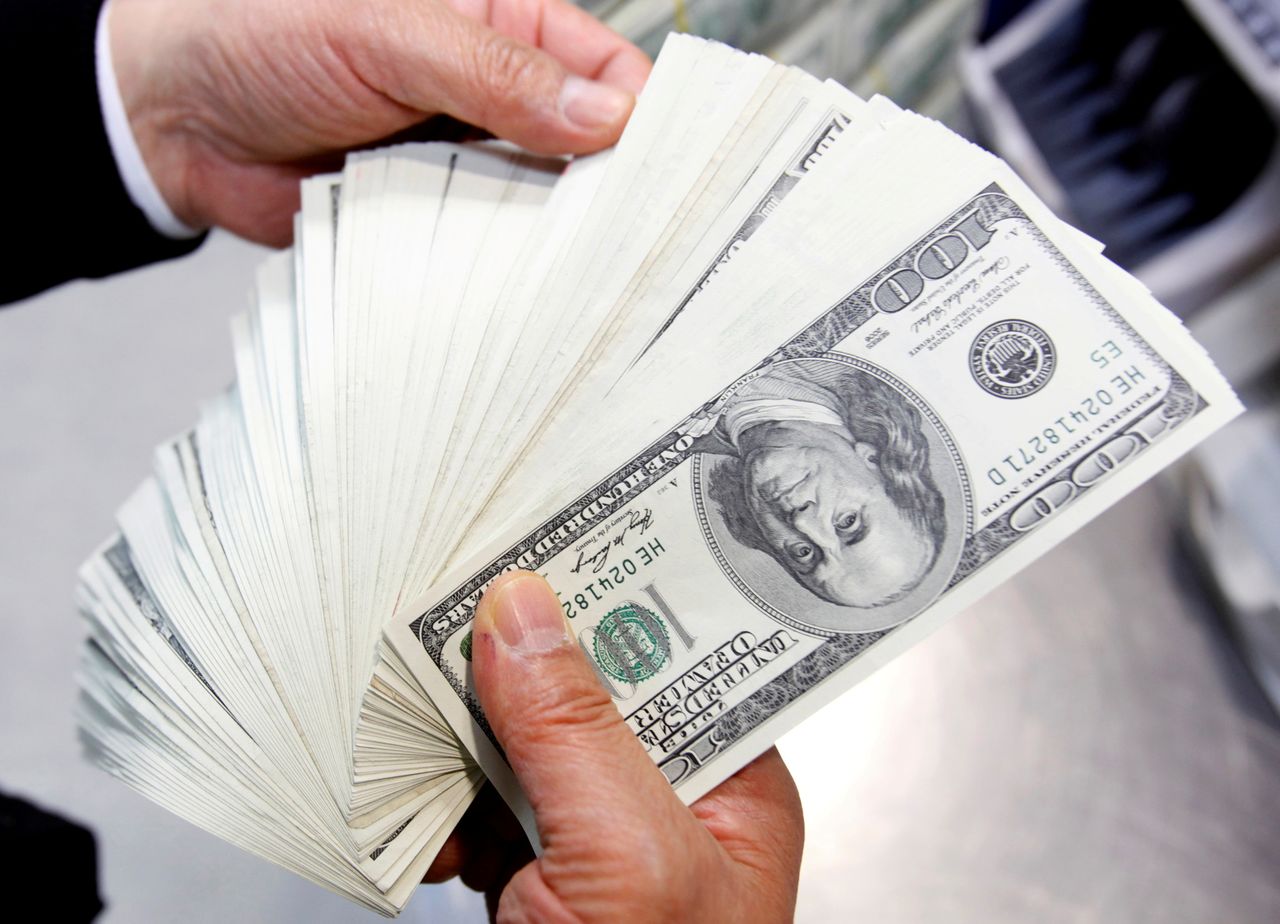U.S. dollar posts best month since November 2016; nonfarm payrolls loom
Newsfrom Japan
- English
- 日本語
- 简体字
- 繁體字
- Français
- Español
- العربية
- Русский

FILE PHOTO: An employee of the Korea Exchange Bank counts one hundred U.S. dollar notes during a photo opportunity at the bank's headquarters in Seoul April 28, 2010. REUTERS/Jo Yong-Hak/File Photo
By Gertrude Chavez-Dreyfuss
NEW YORK (Reuters) - The dollar rose to a 2-1/2-month peak on Wednesday, posting its biggest monthly rise since November 2016, supported by a surprisingly hawkish shift in the U.S. Federal Reserve's rate outlook and concern over the spread of the Delta coronavirus variant.
The dollar has gained about 3% against a basket of currencies this month, partly in the wake of the Fed's stance at a meeting early this month. Traders are looking to Friday's U.S. nonfarm payrolls report for confirmation of a shift in monetary policy.
The greenback also extended gains after data showed U.S. private payrolls increased more than expected in June by 692,000 jobs. Data for May was revised lower to show 886,000 jobs added instead of the initially reported 978,000. Economists polled by Reuters had forecast private payrolls would increase by 600,000.
Action Economics said the dollar has been mainly supported by the better-than-expected U.S. private payrolls data, "which has driven dollar short covering," ahead of the employment report.
The research firm also cited firmer short-term U.S. Treasury 2-year yields, up nearly 11 basis points in June, the largest increase since September 2019, as investors priced in some tightening in 2023.
"This should continue to help the U.S. dollar going forward, as expectations are for the Fed to begin tightening first," Action Economics said in its blog. "In addition, U.S. economic growth is likely to handily exceed that of Europe."
On Friday, the U.S. Labor Department is expected to report a gain of 700,000 jobs in June, compared with 559,000 in May, and an unemployment rate of 5.7% versus 5.8% in the previous month, according to a Reuters poll of economists.
"If we see the U.S. employment number come out stronger than expected, then this reinforces the narrative that the Fed may remove accommodation faster than previously expected," said Erik Nelson, macro strategist at Wells Fargo Securities in New York. "That's going to be dollar-positive."
Investors were also apprehensive about the spread of the Delta variant that has prompted some countries such as Australia, the UK, and parts of Europe to undertake or plan renewed lockdowns, causing their currencies to struggle. That has put a bid on the U.S. dollar.
In afternoon trading, the dollar index, which measures the greenback against a basket of six major currencies, rose 0.4% % to 92.441 after earlier touching 92.451, its highest since early April.
The euro was down 0.4% against the dollar at $1.1849. Earlier, the euro dropped to a 4-1/2-month low of $1.1845. Against the yen, the dollar was 0.5% firmer at 111.09 yen. It rose to 111.12, the highest since late March last year.
Risk-sensitive and commodity-exposed currencies such as the Australian and New Zealand dollars nursed losses against the greenback. The Aussie and New Zealand dollars were down 0.2% and 0.1% at US$0.7496 and US$0.6983 respectively.
(Reporting by Gertrude Chavez-Dreyfuss; Editing by Andrew Heavens, Chizu Nomiyama, Jonathan Oatis and Sonya Hepinstall)
(c) Copyright Thomson Reuters 2021. Click For Restrictions -
https://agency.reuters.com/en/copyright.html
Reuters Japan United States Asia Australia Europe Canada US New Zealand Seoul United Kingdom UK